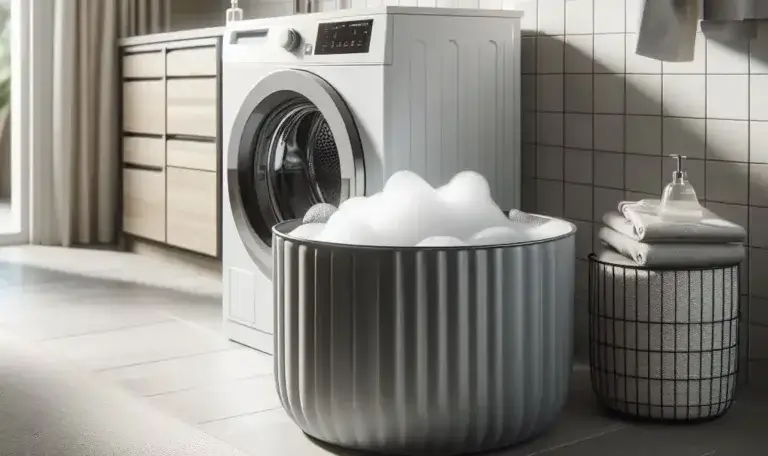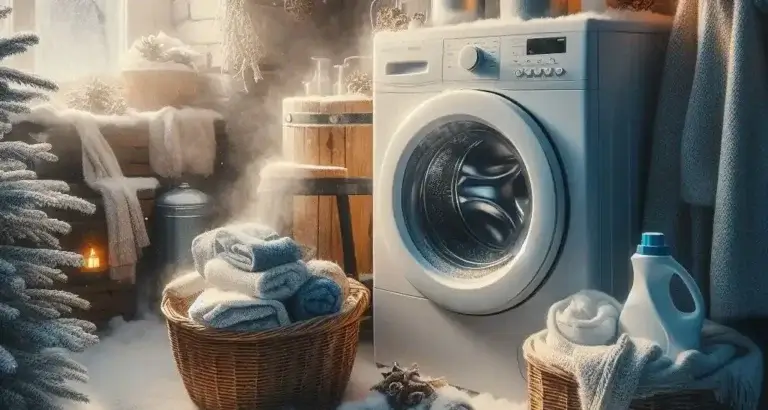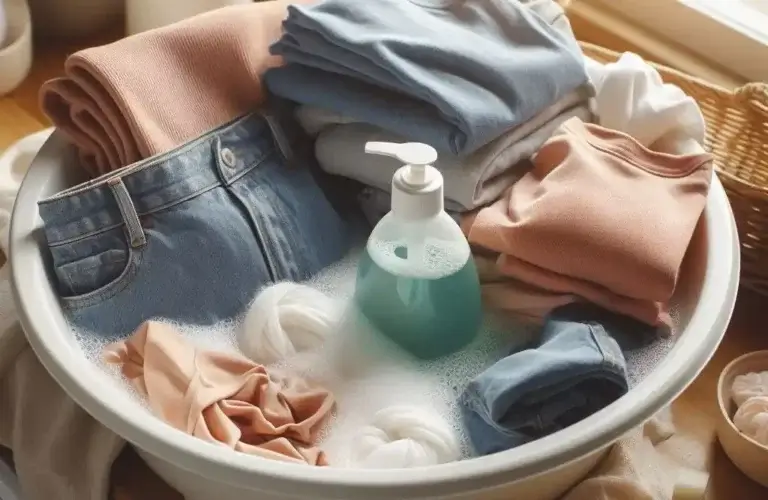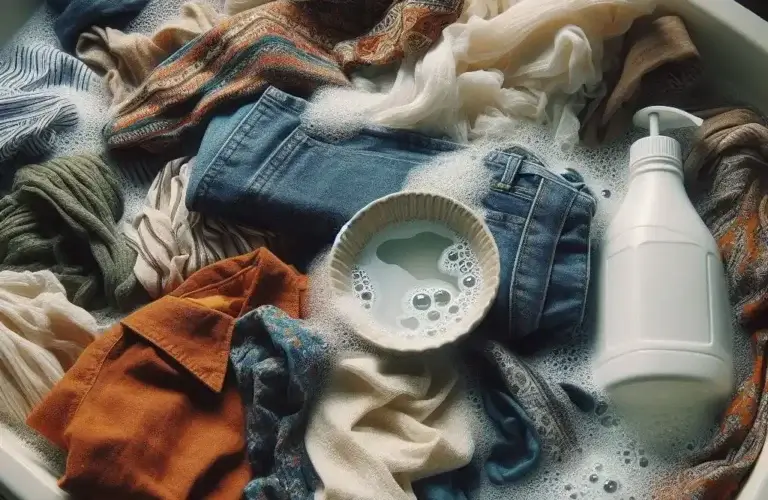Is It Safe to Do Laundry in Freezing Weather? How Extreme Cold Can Affect Your Appliances
Freezing temperatures and extreme cold weather can wreak havoc on homes and appliances turn water valves off when not in use ensure the water valves in the kitchen are safe and not spraying water onto the unit is important to inspect water valves to avoid any potential water damage. As Old Man Winter’s chilly grasp tightens around us, you may be wondering – is it safe to do laundry when it’s freezing outside? What about my washing machine, dryer, and other appliances? Will they be damaged by the winter weather?
In this comprehensive guide, we’ll explore whether is it safe to do laundry in freezing weather and how extreme cold and freezing temperatures can impact appliances like washing machines, dryers, dishwashers, refrigerators, HVAC systems, and more. You’ll learn whether it’s risk-free to run these appliances in frigid conditions, plus tips to keep them safe from damage as the mercury plummets.
Table of Contents
How Does Freezing Weather Affect Washing Machines and Laundry?
Doing laundry is non-negotiable, regardless of the outdoor temperature, the water valves need to be monitored. However, winter chills and freezing weather can cause issues with washing machines and laundry routines. Here’s what you need to know about protecting water pipes from cold temps.
Can I Use My Washing Machine When It’s Freezing Outside?
Yes, you can safely run your washing machine even when temperatures dip below freezing outside – with a few key precautions:
- Locate the washing machine in a heated space above 32° F, like the kitchen or basement. The basement or garage or an uninsulated area risks appliance damage due to extreme cold weather.
- Check water inlet hoses for cracks that could burst under the freezing pressure, especially if your washing machine is located in the basement or garage. Replace old, brittle hoses.
- Drain the water lines by running a wash cycle with no clothes. Freezing water left inside can fill the tub and destroy internal tub parts causing the water intake valve to break.
- Shut off the water to the washing machine when not in use to prevent icy floods if pipes burst.
Positioning the washer away from exterior walls and cold drafts helps maintain a safely warm environment for worry-free winter laundry.
How Does Extreme Cold Affect Washing Machines?

While regular winter weather generally isn’t cold enough to damage a washing machine, extreme sub-zero temperatures can wreak havoc in a few ways:
- Frozen water in inlet hoses or internal tubes can rupture the lines. Burst hoses lead to catastrophic water damage as icy water spews out.
- Water frozen inside the washing machine drum or tub warps metal parts. Once thawed, components such as the ice maker are left dented and deformed, unable to spin properly.
- Ice blocks in water pipes or drainage pipes prevent wastewater from exiting.. Overflowing water floods from the machine as cycles finish.
Taking preventative measures guards against these washing machine failures so you can enjoy clean clothes all winter long.
7 Tips for Doing Laundry When It’s Freezing Outside
Here are 7 tips to tackle laundry safely, even if extreme cold weather is nipping at your nose:
- Check washing machine water lines and inlet valves for cracks then replace if needed – this prevents explosive bursts from frozen water.
- Insulate/heat the laundry room so temperatures don’t drop below freezing.
- Drain the water lines In case of extreme cold temperatures, safeguard your appliance by running an empty wash cycle before a freeze sets in.
- Disconnect hoses & shut off the water to the washer when very cold.
- Leave washing machine doors open so lingering moisture doesn’t turn to ice.
- Ensure drainage pipes are clear of debris so wastewater flows freely.
- Wipe excess moisture from the washing machine tub and door gaskets to discourage ice buildup.
With these precautions against frozen and burst pipes, you can confidently run winter wash cycles without worry!
What to Do If Your Washing Machine Freezes
Despite your best efforts, washers can still fall victim to Old Man Winter’s freezing grasp. Here’s what to do if your washing machine becomes a frozen block:
- Shut off the water lines/valves entering the washer. This stops additional water from feeding appliance damage, like to the ice maker, as it thaws.
- Keep the machine doors open so the drum and inner compartments thaw faster. Closed doors trap cold air and delay defrosting.
- Absorb leaking water immediately with towels from the water valves. to limit water damage to your floors.
- Wait for full appliance thawing before attempting to use it. Running a frozen washing machine risks electrical shorts and mechanical issues.
- Inspect for leaks or ruptured hoses/valves once fully thawed. Replace damaged parts before restarting the washer.
- Run several empty “rinse only” cycles to flush residual ice shards before washing clothes again.
Be sure the washer has completely thawed before hitting start. Listen for odd sounds that may indicate damage during early test cycles. The sooner you catch problems, the quicker repairs can happen before permanent failure occurs.
Are Front-Load or Top-Load Washers Better in Cold Climates?
Opinions vary on whether front-load or top-load washing machines survive severe winters better:
- Front-load washers are more vulnerable to failure since all mechanical parts are in the cabinet and exposed to freezing indoor air.
- Top-load washers only have the drum tub exposed above the warm interior base. Internal parts stay safely insulated.
- Front-loaders drain fully after cycles, leaving little residual water to freeze in pipes. Some top-load tubs retain water, increasing ice risks.
- Proper maintenance is most critical Addressing cracks, insulation, and ensuring pipes from freezing, drainage, etc makes any washer design winter-proof.
With mindful precautions against ice formation, front, and top-load washers operate reliably regardless of the dropping mercury. Pay extra attention to protecting cold-exposed front-loader components.
Can Freezing Temperatures Damage Clothes Dryers?

On extra cold days, even the interior of homes can dip below the freezing mark. When indoor temperatures plummet this severely, clothes dryers also fall victim to failures from frozen water accumulation and mechanical operation while ice-cold.
Here’s how extreme cold affects clothes dryers plus tips for keeping these winter laundry workhorses running smoothly:
Which Clothes Dryer Parts Are Vulnerable to Freezing?
Several dryer components are at high risk for freeze damage and malfunction:
- Water hoses/valves – Inlet hoses feeding the steam cycle unit burst under expanding frozen water pressure. Blocks of ice also affect valve operation and may cause the water intake valve to malfunction.
- Internal moisture collection tanks – Condensation leftover in tanks becomes problematic ice chunks, such as the ice maker, causing water overflow into internal machinery in extremely cold temperatures.
- Ventilation ducts Ice formations block ducting, limiting airflow and drying efficiency while increasing fire risk and causing water damage as a result.
- Drum rollers/belts – Mechanical parts seize up and crack attempting to spin a frozen drum reservoir.
While winter weather seldom dips low enough inside to devastate dryers, extended sub-zero cold spells require preventative action to avoid destruction.
Can You Use a Clothes Dryer in Freezing Temperatures?
It’s best practice to keep indoor temperatures above freezing even during bitter cold spells to allow safe clothes dryer operation.
However, running a dryer when the indoor temperature dips below 32°F risks complications:
- Moisture left in dryer parts transforms into problematic ice chunks. Defrosting leads to water overflowing into internal operating parts.
- Faulty ventilation from blocked ductwork causes overheating failures. Limited airflow can’t effectively cool dryer mechanisms.
- Frozen drum rollers and belts struggle to turn a rigid icy tub, leading to mechanical jams and then snaps from excessive pressure.
While drying full loads occasionally at cool indoor temps is OK, avoid frequent dryer use under 32°F to prevent irreversible appliance damage.
6 Tips to Safely Run Your Dryer in Cold Weather
Here are 6 handy tips to prep your clothes dryer for blizzard-like conditions so winter laundry stays on track:
- Thoroughly wipe down interior moisture after loads finish drying. This prevents pools of water from freezing on dryer surfaces and causing water damage as a result.
- Remove lint accumulation from ductwork to support maximum airflow and drying speed, even in cold air.
- Insulate dryer ventilation pipelines to prevent pipes from freezing when the temperature drops below freezing. Wrap ducts that pass through unheated spaces to limit frost blockages.
- Disconnect steam cycle water lines and drain residual liquid to protect pipes from bursting under frozen water pressure.
- Leave dryer doors ajar to prevent freezing when the temperature drops below freezing. after use so lingering interior moisture doesn’t turn to problematic ice.
- Run dryer empty on fluff mode For 5-10 minutes after finishing laundry loads, make sure to close the water valves. The heat flush evaporates any remaining droplets inside while warming frigid machine parts.
What to Do if Your Dryer Freezes
A frozen solid dryer is inoperable until completely thawed, warmed, and inspected for proper function. Here are the steps to safely defrost and restart your appliance:
- Unplug the dryer immediately since running it frozen risks short circuits plus mechanical destruction.
- Keep doors open and use portable fans to accelerate the defrosting of interior ice formations. Avoid hacking ice chunks in frustration!
- Place absorbent towels underneath to catch puddles as ice melts.
- Keep doors open and use portable fans to accelerate the defrosting of interior ice formations. Avoid hacking ice chunks in frustration!
- Place absorbent towels underneath to catch puddles as the ice melts.
- Once fully thawed without leaks or electrical sizzling, wipe down any standing water and run the dryer empty. Listen for odd sounds that indicate potential damage to rollers, belts, or other parts.
- Check for leaks along water connection lines and valves feeding any steam cycles. Burst pipes lead to catastrophic water damage if left unaddressed. Replace cracked sections of the hose or faulty valves.
- Inspect ventilation ductwork for obstructions from ice or snow that formed during the freeze. Remove built-up lint or blockages to ensure ducts are fully open and intact. Bent pipelines create fire hazards from excessive heat and poor airflow.
- Examine the drum for dents and the rollers/belt for cracks that may have occurred while frozen. In cold temps, spin an empty dryer manually checking for binding or stiff rotation. If damaged, replace affected parts right away to restore safe function.
- Finally, dry several empty test loads checking for odd smells from overheating wiring or mechanics. Ensure cycles run their full duration signaling electronics survived the freeze too.
By methodically thawing, inspecting, and test operating your frozen dryer, you can catch lingering damage early before it escalates into a much larger, expensive issue. Take the necessary time to defrost the appliance fully before pushing your luck on a fast fix. If anything seems off, call in an appliance repair technician right away!
Don’t Let Freezing Weather Freeze Up Your Dishwasher!
Dishwashers are another kitchen appliance susceptible to breaks and leaks when Old Man Winter comes knocking. Luckily, the right preparation minimizes freeze risks so clean dishes keep rolling all season long:
- Install insulation around water supply lines and valves feeding the dishwasher to prevent ice blockages.
- Position dishwashers against interior walls, away from cold exterior ducts and drafty windows where possible, this cold weather can affect its performance.
- After cycles are complete, fully wipe down interior tub surfaces and around the door’s rubber gasket to remove standing water that could turn to ice.
- During cold spells, run a rinse-only cycle with the dishwasher empty before bed to prevent water damage as a result. This flushes any residual moisture through drain lines.
- Check drainage lines under the unit to ensure they’re draining fully and water isn’t collecting due to a clog from food debris or sediment buildup.
- For dishwashers unused for extended periods in severely cold homes, shut off the water supply valve and disconnect the inlet hose to prevent bursts or leaks.
Equipped with these dishwasher winterizing tips, your unit will brush off icy temperatures and keep dishes sparkling clean no matter how low the thermometer dips!
Don’t Freeze Out Your Refrigerator!
Refrigerators and freezers see plenty of internal ice and cold air circulation. But bitterly frigid external temperatures still spell trouble for these appliances. Here’s how extreme winter conditions impact refrigeration units plus prevention pointers:
- Inadequate insulation around refrigerant lines and valves coupled with freezing indoor air allows ice blockages to prevent proper circulation.
- Accumulated freezer ice lowers cooling efficiency. It’s critical to routinely defrost units so they don’t overwork compensating for reduced space and cold airflow.
- During power outages, frequent refrigerator door opening allows precious chilled air to escape. This leads to faster food spoilage plus refrigerator recooling issues once power is restored. Limit openings to avoid letting cold air jeopardize the maintenance of the desired indoor temperature.
- Lengthy power disruptions in remote cabins or severely cold regions turn contents into loss as units are unable to maintain safe temperatures. Have a backup generator or contingency refrigeration plan.
- Ice instead of water on outdoor condenser coils critically lowers their heat dispersion capabilities, forcing refrigerators into overdrive in attempting to cool. Routinely inspect then clear external ice buildups with hair dryers if needed.
With attentive refrigerator maintenance and emergency preparations in extremely cold temperatures, don’t fear the winter wrath when grabbing a cold one from your icebox!
Don’t Let Freezing Temps Chill Out HVAC Systems!
Finally, bitterly cold winter weather strains home heating, ventilation, and air conditioning (HVAC) systems working overtime to maintain indoor comfort. Failures often require costly repairs from frozen damage, burning-out motors, cracked heat exchangers, burst pipes, and more. Here’s how plummeting temperatures impair HVAC equipment:
- Ice blockages in external condenser ventilation piping due to poor insulation cause overworked electrical parts plus airflow inefficiencies allowing indoor temps to drop.
- Frozen water/condensation in air handler drip pans overflows rather than properly draining, leading to leaks damaging walls, electrical plus installations underneath.
- Extreme cold strains heating element components like electric resistance coil wires and fuel oil lines. Eventually, fractures lead to stoppages/leaks.
- Blowers, motors’ internal bearings seize up attempting to distribute wafer-thin, icy air through frozen vents rather than moving warm, lighter atmospheres.
While indoor HVAC equipment is built for cold tolerance, multiple fail points still exist. Here are 5 pro tips to avoid frozen HVAC unit headaches:
- Service heating systems pre-winter ensuring components are in optimal shape for bitter weather operations.
- Insulate all external ductwork and piping to prevent cold air infiltration and ice blockages.
- Check drip pans under air handlers monthly to ensure condensation flows freely to drainage lines.
- Clear snow and ice buildup around external HVAC system pads, vents, and piping frequently to encourage airflow.
- Install an emergency generator for backup power to furnaces, well pumps, and other critical equipment to avoid winter weather disruptions.
With preventative seasonal maintenance, HVAC systems survive super chilly conditions keeping homes comfortably protected from the elements!
In Closing – Is It Safe to Do Laundry in Freezing Weather
Extreme cold and winter deep freezes threaten all types of home appliances by freezing critical water lines, ventilation pathways, and mechanical parts leading to catastrophic damage. But with preventative seasonal maintenance plus emergency preparations, residential washers, dryers, dishwashers, refrigerators, and HVAC systems withstand even the most brutal sub-zero conditions.
Follow the winterizing tips outlined to keep appliances running smoothly regardless of the outdoor thermometer’s dipping distress! Bitter cold brings unique challenges but arming yourself with the right knowledge conquers Jack Frost’s freezing wrath.
Stay toasty AND keep clean clothes, dishes, food, and comfortable indoor temperatures all winter long! Just show Old Man Winter who owns the place as you relax with hot cocoa while your appliances hum along freeze-free!
Laundry in Freezing Weather FAQs:
Q: Can I do laundry indoors when it’s freezing outside?
A: Absolutely! As long as your washing machine is inside a heated building, there’s no problem doing laundry, even in freezing temperatures.
Q: Is it safe to do laundry outdoors in freezing weather?
A: It depends on various factors:
- Water supply lines: If they’re exposed or poorly insulated, they might freeze and crack. Consider insulating the hoses with heat tape or pipe insulation, or draining them after each use.
- Drain line: If it runs through an unheated space, it could freeze. Consider insulating it for protection.
- Drying clothes: Hanging wet clothes outside will stiffen and potentially damage them. They might take longer to dry or freeze solid.
Q: What about my detergent? Will it work as well in freezing temperatures?
A: Some detergents are less effective in very cold water. Choose one labeled for “cold water” washing or adjust your machine’s settings to “warm” or “semi-warm” for better cleaning.
Q: Can the cold weather affect my washer and dryer?
A: Extremely cold temperatures can affect their performance. If it’s very cold, consider waiting until it warms up to avoid potential issues.
Q: Any other tips for doing laundry in freezing weather?
- Disconnect and drain hoses after each use outdoors to prevent freezing.
- Avoid using outdoor laundry lines if possible.
- If you must hang clothes outside, bring them in quickly, especially before nightfall, to prevent freezing.
- Consider alternatives like laundromats or indoor drying racks if you’re worried about freezing temperatures impacting your home laundry setup.








